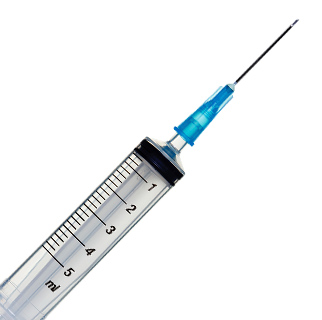The Menace of Methamphetamine
Methamphetamine (meth) is a highly addictive drug. It's a Schedule II controlled substance. This means it's available legally only by a nonrefillable prescription. It can be prescribed for attention deficit/hyperactivity disorder (ADHD). In rare cases, it can be prescribed for weight loss. But most meth that is abused is made in illegal labs. And the doses abused are much higher than those prescribed.
Meth is related to the legally prescribed stimulant amphetamine. But it has stronger effects. The drug causes an immediate feeling of increased activity, or a "rush," along with decreased appetite.
Meth is known on the street as crank, ice, crystal, or tweak. The drug is taken in pill form. Or it can be snorted or injected in powdered form. It can also be smoked. This crystallized meth is a more powerful form of the drug.
Wide appeal
Meth lures people looking for a high. But it also appeals to women trying to lose weight. Or those seeking a burst of energy to make it through the day. In fact, women use meth at rates that are about equal to men. That is unlike many other illegal drugs, which are mainly used by men.
Meth use by women of childbearing age is of special concern. Children exposed to meth during pregnancy can have problems with brain development. These problems can cause attention deficits and behavioral problems as the children grow. Knowing that a child has been exposed to meth is critical. This can help prevent the emotional and behavioral problems from getting worse.
When meth starts to wear off, abusers face two choices. They can suffer through what can be a 3-day bottoming-out period. That may include feeling grouchy, lacking energy, and having headaches. Or they can take another dose to ease their suffering. But they then risk addiction.
More and more people are taking that second dose. People hear the myths that the drug does good things and lasts 12 hours a dose. They feel they can work longer hours, study more, and lose weight.
Meth can also be easily found. Unlike other stimulants, it can be made in the kitchen sink using cheap household ingredients. But the process can be dangerous. Explosions are possible.
Too much energy
Addiction is closely tied to how quickly a user feels a drug's effect. Most meth users either smoke or inject it. Both methods rapidly bring on a high (a feeling of euphoria). This euphoria is followed by up to 12 hours of what feels to the user like endless energy. Everything speeds up. There is a decreased need for sleep. Users talk a lot and lose their appetite.
People who abuse cocaine also get a feeling of euphoria. But the body quickly gets rid of the drug. The good feeling quickly decreases. Meth remains in the body far longer. So its effects last longer. When meth wears off in long-term (chronic) users, they often display frantic and compulsive behaviors commonly referred to as "tweaking."
Meth coaxes the body to work harder. The heart rate increases and metabolism speeds up. The brain's ability to balance sedation and activity is changed. This can lead to seizures. The increase in heart rate can lead to heart rhythm problems as well as heart attacks, even in the very young. The drug drives the heart to exhaustion.
Chronic meth abusers can suffer long-term health effects. The drug can damage areas of the brain that control muscle movement, verbal learning, emotions, and memory. Meth use can also cause malnutrition, aggression, psychotic behavior, and severe dental problems. It also increases the risk for stroke. Some of this damage may be reversed if a person quits abusing the drug. But recovery can take years.
Medical Reviewers:
- Amy Finke RN BSN
- Eric Perez MD
- L Renee Watson MSN RN
